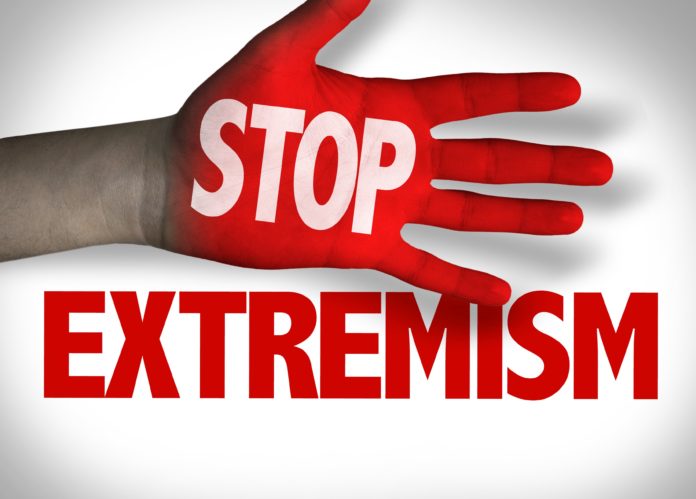India has been at the receiving end of terrorism and violent extremism right since its inception as an independent nation in 1947. However, the world at large especially the US and Western powers only started recognizing this scourge mainly after the 9/11 terror attacks in New York.
By Brig.Vinod Anand
In the year 2019, the Christ church terror attack on a mosque in March, Easter bomb attacks in Colombo, car bomb attacks against Indian security forces in February in Pulwama and the London Bridge terrorist attack early in December only indicates that along with globalization terrorism has also been globalized. It goes without saying that the phenomenon of terrorism needs a cooperative and coordinated global response as no country can be said to be immune to it. However, at the global and regional levels there have been many impediments to substantive cooperation on countering violent extremism (CVE). This is largely due to differences in perceptions on what constitutes violent extremism or its variations i.e. terrorism. Geopolitics and political expediency also prevent a unified response to violent extremism. Thus, a common agreed and accepted definition of this phenomenon remains the cornerstone for strengthening international cooperation.
Definition of Extremism—Differences and Consensus
While there is no clear globally accepted definition of extremism, and radicalization; these terms are inter-linked and mostly used to deal with another violent phenomenon: terrorism. In comparison with term “radicalization”, “extremism” term was coined in modern times. For the first time, term “extremism” was used as a scientific concept by Manfred Funke in the late seventies. However, it was widely used by the US Senator Daniel Webster to describe the extreme violent actors or sympathizers during the American Civil War. Even for Islamist fundamentalists, some authors coined the term “non-violent extremism” according to which the fundamentalists do have extreme views, but they are not active jihadists.
Extremism is understood as actions in form of beliefs, attitudes, feelings, activities, and strategies, of an individual or a group which is different from an ordinary identity.1 Extremism does exist at the edge of the society and seeks to invade and conquer its core by instilling fear of enemies within and outside of the same society. As an essential by-product of extremism, the extremists trend the factors to engage in militancy through criminal acts, and mass-violence to convince their fanatic demand to gain political power. Academicians lack the sufficient evidences to determine the indicators of extremism and radicalization, such as behavioral changes in clothes, establishments of Wahhabi mosques on foreign funding, and transition in attitude towards the lifestyle of society. For an academic consensus on definition refer to the end note.2
Phenomenon and Trends of Extremism
Originally, the phenomenon of extremism was said to be caused by to the type of political dispensation or political system prevalent in a country that was unacceptable to large majority of the populace. It is also linked with the religious and fanatical belief system. On their achievements, big or small, the extremists tend to glorify their phenomenon and actions as a conflict resolution mechanism, and mostly opposed to the idea of constitutional state, democracy, the rule of law, and the basic Human Rights. In extremism, the idea of violence is a legitimate part of political action and have intolerance to ideologies other than their own.
In case of India, extremism has emerged in a variety of forms ranging from Left Wing Extremism i.e. ideological extremism to religious radicalism and extremism leading to violent actions. Because of the multi-religious nature of the Indian state and many other contextual reasons religious radicalism and extremism has always been present in India in some form or the other. The third variety of extremism in India is the ethno-nationalist extremism with the aim of separating from the nation. For instance, activities of insurgent groups in North East India where now the situation is under control and many insurgent groups have joined the mainstream.
Naxalite extremists have also been the concern of Indian state machinery for long though at present its incidence has declined. Yet some years back our then Prime Minister Manmohan Singh had declared it as the biggest threat to our security.
With the emergence of Islamic State in 2014, and further the mobilization of Indian Muslim youth to IS-controlled region in Iraq and Syria, as foreign terrorist fighters, the radicalization has become a new challenge for India. To tackle this, India has initiated number of de-radicalization programmes to prevent radicalization, and extremism which led to the recruitment of young Indian Muslims with terrorist groups.
Measures for Containing Extremism
Many scholars get confused between CVE (Countering Violent Extremism) and CT (Counter-Terrorism). To contain extremism, two approaches are viable— “hard approach” which includes use of military, intelligence, and police, and “soft approach” which includes emphasizing on cultural and social empowerment through community involvement also termed as winning the hearts and minds of the target population. The best approach could be a mix of both “hard and soft” termed as “smart CVE”, which involves the decision to use part of half and part of soft approaches, depending upon the circumstances. Through the promotion of counter-narrative, and involvement of community, supporting the economic development, and promoting conflict resolution, the Smart CVE approach is more likely to succeed.
Post-Mumbai terror attacks, each security establishment of India received raised in their budget and India got its first harbour defence system—equipped with multitude of coastal surveillance radars, high-power underwater sensors and other technical equipment which are capable of detecting, identifying, and tracking threats on surface or underwater. The effective CVE is incomplete without intelligence sharing. Focusing on this, the Intelligence Bureau (IB) had reorganised its MAC (Multi-Agency Centre), and further S-MACs (Subsidiary Multi-Agency Centres) were established at 30 locations in India, responsible to feed intelligence through secured online connectivity.
The Maharashtra state government introduced a de-radicalization programme, focusing on engaging the youth from Muslim community through activities such as “National Cadet Corps”, and “Bharat Scouts and Guides” as a mandatory programme in the school of minorities. Indian government also planned to adopt the strategy of de-radicalization in form of modernising the Islamic education on line of Malaysia’s modern Islamic education system. As per the draft prepared by Mumbai Police Anti-Terror Squad in 2016, the counter-strategy to the threat of IS in India was to involve Muslim youth into the mainstream through various sectors, including education, sports, law and order, skills development. The difficulty for India to follow western-style de-radicalization or CVE programme is due to the various types of extremist ideologies and elements that exists in India. Whereas, Western-style CVE programme focused on Muslim immigrants and their communities.
Therefore, it is essential for India to adopt a “Smart CVE” which suit its challenges, and empower the communities and civil societies, with the creation of counter-narratives, and addressing the root causes of extremism.
International Measures to Counter-Extremism
Apart from the United Nations’ CTITF (Counter-Terrorism Implementation Task Force), the EU (European Union) had increased its aspect of intelligence sharing and taken up various projects of CVE (countering violent extremism) at both— domestic and international levels. Along with US on engaging militarily operations, EU has emphasised on building effective counter-narratives, and efforts towards CVE. Internationally, Norway and Germany have adopted EXIT3 programme, the Kingdom of Saudi Arabia has struggled against violent extremism; Singapore adopted the strategy to engage with its minorities, and the United Kingdom has adopted ‘Prevent Strategy’ towards countering and preventing the spread of violent extremist ideologies.
As a significant contribution to counter-extremism on international platform, India proposed a Comprehensive Convention on International Terrorism (CCIT) in 1996 but with support from other countries, the agreeable draft only emerged in 2007. Some of the salient features of the CCIT proposal included the definition of terrorism which could have been adopted into the respective criminal laws of the members of the UN. Apart from proscribing the terrorist organisations, the CCIT also had a clause for prosecution of all terrorists under special laws. Regrettably, till the date, no final decision has been given on the CCIT.
However, India is optimistic that in near future, the CCIT proposal would be adopted to deal with the extremism and terrorism, as this evil continues to haunt the world.
Further, a Financial Action Task Force (FATF) was formed by G-7 countries for combating money laundering and later its ambit was expanded to include countering terror financing. Recently, a number of nations have come under its scrutiny for overlooking terror financing activities in their national territories and thus have been put on notice. Undoubtedly, FATF members need to eschew geopolitical differences while declaring the defaulting countries as non-compliant and blacklisted or grey listed depending upon the merits of their cases.
Additionally, while block chain technology facilitates terror finance through utilization of crypto-currencies however, the same technology can also be used to beneficial effects in CVE through a variety of ways. In the coming Tokyo Olympics the block chain technology will be used to identify likely terror groups and possible individuals who are likely to go in for lone wolf attacks. There are other very useful programmes and software that can counter radicalization or help in identifying potential recruits.4
Cooperation through Regional and Bilateral Mechanisms
India, as part of Shanghai Cooperation Organization (SCO) has carried out counter terrorism exercises with its members. Tashkent based Regional Anti-Terrorism Structure of SCO would be a useful mechanism for sharing of intelligence. At the regional level India has also conducted counter terror exercises as part of Bay of Bengal Initiative for Multi-Sectoral Technical and Economic Cooperation (BIMSTEC) in September this year. India also hosted the second meeting of the High-Level Group of Eminent Experts in September to strengthen the South Asia Association for Regional Cooperation (SAARC) anti- terrorism mechanism. There is a SAARC Regional Convention on Suppression of Terrorism entered into force in August 1988. Further, India has a number of bilateral Joint Working Groups on counter terror cooperation with a number of countries. At bilateral level India and China have also carried out Hand-in-Hand counter terror military exercises, most recently being the joint drills in India in early December. However, despite many of such mechanisms the cooperation between many of the countries has not been of the required levels.
India remains acutely aware of the threat that CVE/terrorism poses to the civilised society and the world and continues to make efforts to seek a common and agreed definition of terrorism. The international community needs to strengthen its response to this scourge in a unified manner bereft of geopolitics.
The author is a senior fellow at VIF. This article was first published on vifindia.org and belongs to VIF.












